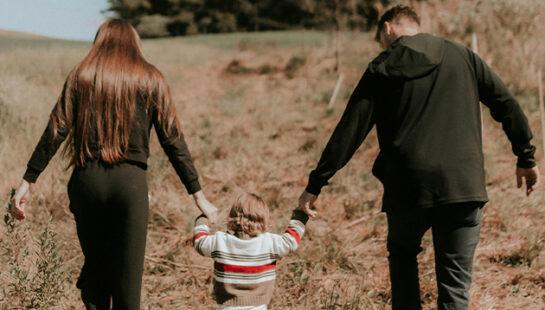It was the most anticipated day of the year: the staff sample sale.
The lines were long, winding through hallways and up stairwells. Rolls of plastic bags were moving down each line like pass-the-parcel. The rules were simple—each person may fill a bag with as much clothing as they can stuff in, all for the bargain price of just $25. On a normal day, $25 wouldn’t buy as much as a shoelace from this brand. The glistening potential of an entire new wardrobe glimmered in my determined colleagues’ eyes.
I was at a new job, still high on the excitement of landing a coveted role at an international fashion brand with a cult following. I’d learned this was the one day of the year when stilettos were swapped for sneakers. For good reason.
As the doors opened, I was swept into the sale room without even using my feet. Those lucky enough to reach a box first began digging. Shoes, tops, skirts went flying. The elbows were out, and the manicured nails were digging in. Think Isla Fischer in Confessions of a Shopaholic taking out her competition over the Gucci boots. Sheer terror.
This, my friends, was the Hunger Games of fashion.
The Hunger Games Of Fashion
I was in slight shock and hadn’t quite made it to a box. Instead, I was blocked in an aisle unable to move even an inch to my side. I looked around the room, admiring the ridiculous scene and wondering how I’d found myself in this situation.
As the crowd moved around, I grabbed a few things off the floor, stuffing them into my bag. Truthfully, I had no idea what I’d collected until after I’d escaped the chaotic scene, still high on adrenaline.
The distinction between amateurs (such as myself) and virtuosos became clear as the dust settled, and the bags were emptied. The virtuosos had victoriously claimed the most coveted pieces—the sold-out tulle dresses, breezy summer linens, and embossed leather accessories.
Amongst my pile: a mismatched pair of shoes, a torn dress two sizes too small, and a button-up blouse, sans buttons. Not quite the satisfying haul I was hoping for. I walked to my car, loot-in-hand, a little deflated and pondering my options for disposing of my useless winnings.
This is just a single anecdote of many I could reflect on from my time working in the fashion industry. But the recurring theme through them all was a lurking feeling in my conscience that challenged me over and over again.
Do You Need More Stuff?
How often do you get caught up in the thrill of a useless bargain? With Black Friday sales looming this week, I wonder how many of us will end up with another bag or two of items we didn’t really want nor need. And, how much of it will end up in a pile of landfill either here or burdened on a less fortunate country.
I’ll let you in on a little secret. Lean in close now. Here’s what the fashion industry doesn’t want you to know: you have enough. You are enough. You’re enough without that new season handbag or trending cut of jeans. You’re enough without an upgraded iPhone or new shade of lipstick. Heck, if you’re reading this from Australia you probably own more ‘stuff’ than 90 per cent of the global population.
Now, in case you’re wondering, I don’t write to you as a hemp-wearing, tiny house inhabiting, minimalist. I speak to you as someone who appreciates the craftsmanship and artistry behind fashion and understands the value and joy that clothing can bring to our lives. I valued it enough to spend years of my life studying and working to do just that.
The light bulb moment that ended my career in fashion, went something like this: a garment could be manufactured in the most ethical and sustainable supply chain in existence (a unicorn in current terms), but ultimately—the World. Doesn’t. Need. More. Stuff.
A garment could be manufactured in the most ethical and sustainable supply chain in existence (a unicorn in current terms), but ultimately—the World. Doesn’t. Need. More. Stuff.
The World Doesn’t Need More ‘Stuff’
Here’s the thing: ‘stuff’ affects more than just you. It has an impact on the people who made it, and the environments in which it was made.
Let me be clear—I’m not arguing ‘down with capitalism’. Working for an international aid and development agency, I recognise the fashion industry’s huge potential to bring people out of poverty and provide a dignified living to millions of families. But the current system isn’t quite there yet, with most workers still not being paid a living wage.
I’ve been just as guilty as the next person of a few little splurges. Don’t get swept off your feet in an adrenaline-induced sample sale.
According to Baptist World Aid’s Australian Ethical Consumer Report, 70 per cent of consumers want to change their fashion consumption habits to consume more ethically. But just 50 per cent indicate they regularly follow through on this. Look, I get it. It’s hard. We all have good intentions, but it’s difficult to hold ourselves to account. I’m sure we all start the year with great intentions to get fit, learn a language and stop buying takeaway but come February, a lot of us are probably on the couch ordering Uber Eats with a Netflix binge. Ethical consumption is no different—it takes discipline and learning.
So, what can we do to become more ethical consumers (especially when we’ve got a barrage of Black Friday sales coming our way)?
How To Purchase More Consciously?
The first step is recognising that our purchases impact other people and the planet. Once we start thinking beyond ourselves, it becomes easier for us to recognise our place in the puzzle. Consider, for example, that the average garment is touched by 100 pairs of hands before it finds its way to your wardrobe. That’s 100 people at risk of modern slavery and exploitation—which is widespread in countries where most of our clothing is made. When it comes to planetary impacts, we know the fashion industry contributes up to 10 per cent of global greenhouse gas emissions, and that Australians alone throw away over 4 tonnes of textiles every 10 minutes. That’s a mammoth landfill pile.
When you’re standing in the checkout line or about to plug in your PayPal details, ask yourself, why am I buying this? Examine how much value the item will bring to your life, and how long it will last you (or last in style) before ending up in that six tonnes stat.
Lastly, make an informed choice. Use an easy consumer tool like Baptist World Aid’s Ethical Fashion Guide. They’ve done all the hard work for you in researching and grading nearly 600 brands’ efforts to reduce worker exploitation and environmental detriment.
So next time you catch yourself being lured by stuff your shelves can’t fit, repeat after me: enough is enough.



 Heather Keith,
Heather Keith,

 Sophia Russell,
Sophia Russell,